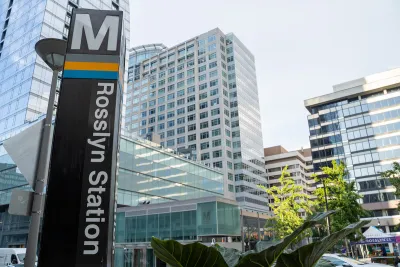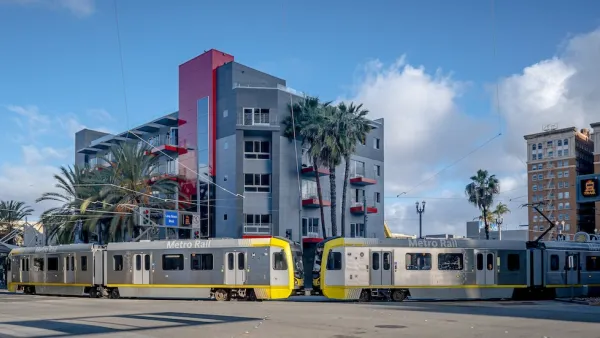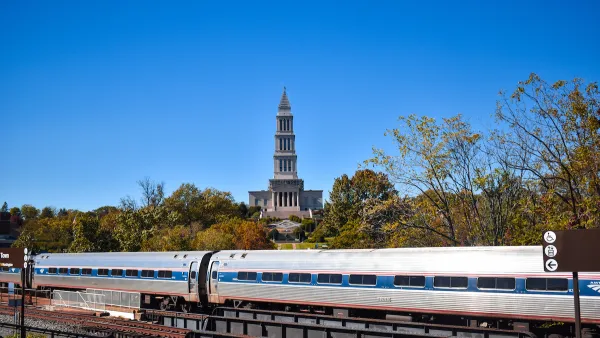Converting underutilized parking lots to housing could make transit more accessible and housing more affordable.

In an opinion piece in Greater Greater Washington, Sogand Karbalaieali calls on the Washington Metropolitan Area Transit Authority (WMATA) to meet the twin goals of boosting ridership and generating revenue to cover its massive budget shortfall by considering other options for its underutilized parking lots, which had an occupancy rate of 55 percent in 2019.
More recently, “As people opted to live and work near metro stations, the demand for parking declined. In most Maryland and Virginia stations, parking usage plummeted to as low as 20% in recent years, driven by remote work amid the pandemic.” This leaves Metro with a valuable real estate asset, Karbalaieali argues. “Why not find a better use for this wasted space?”
Joint development projects that Metro engages in already bring in $194 million in annual state and local tax revenue and $10 million in lease revenue, the article notes. “In its strategic plan, Metro anticipates that new joint developments will add 9 million metro trips annually, which would increase metro fare revenue by $40 million.” These transit-oriented developments (TOD) could
According to Karbalaieali, zoning obstacles, parking mandates, and a lack of political will are holding back such development. “To create vibrant communities around transit hubs, jurisdictions should revoke minimum parking requirements for new developments to facilitate more cost-effective construction, increase housing availability, and expedite development near metro stations.”
FULL STORY: To get the Metro we deserve, transform parking into housing

National Parks Layoffs Will Cause Communities to Lose Billions
Thousands of essential park workers were laid off this week, just before the busy spring break season.

Retro-silient?: America’s First “Eco-burb,” The Woodlands Turns 50
A master-planned community north of Houston offers lessons on green infrastructure and resilient design, but falls short of its founder’s lofty affordability and walkability goals.

Delivering for America Plan Will Downgrade Mail Service in at Least 49.5 Percent of Zip Codes
Republican and Democrat lawmakers criticize the plan for its disproportionate negative impact on rural communities.

Test News Post 1
This is a summary

Test News Headline 46
Test for the image on the front page.

Balancing Bombs and Butterflies: How the National Guard Protects a Rare Species
The National Guard at Fort Indiantown Gap uses GIS technology and land management strategies to balance military training with conservation efforts, ensuring the survival of the rare eastern regal fritillary butterfly.
Urban Design for Planners 1: Software Tools
This six-course series explores essential urban design concepts using open source software and equips planners with the tools they need to participate fully in the urban design process.
Planning for Universal Design
Learn the tools for implementing Universal Design in planning regulations.
EMC Planning Group, Inc.
Planetizen
Planetizen
Mpact (formerly Rail~Volution)
Great Falls Development Authority, Inc.
HUDs Office of Policy Development and Research
NYU Wagner Graduate School of Public Service





























